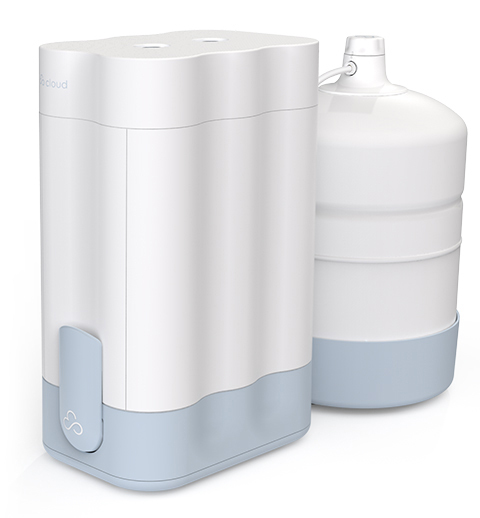What Is a Whole House Reverse Osmosis System?
A whole house reverse osmosis system filters all the water before it enters the house.
It treats every drop of water, from your kitchen sink to the water you use to shave, shower, and flush your toilets.
Whole house systems ensure that no traces of water hardness, salts, contaminants, or TDS damage in your home.
The RO membrane's tiny pores remove approximately 98 percent of dissolved organic and inorganic particles — the other 2-ish percent of contaminants are removed by several pre- and post-filters.
Chromium, uranium, copper, mercury, arsenic, boron, silver, lead, sodium, and nitrates are all removed via reverse osmosis.
There are only a few filtering technologies that can remove them all at once, and reverse osmosis is arguably the most effective for at-home use.
But, do you really need a whole-home system, or can you get by with just an under-sink system?
Is a Whole House RO System Right for You?
You only need a whole house RO system if you have severe water quality problems.
There are relatively few water quality concerns that are so serious that only a whole house reverse osmosis system can solve them.
Here’s a few tips for deciding whether or not you need a whole house RO system:
- Irritated skin when you shower, take a bath, or wash dishes
- “Hard water” that stains appliances and clogs your plumbing
- A compromised immune system and can’t be exposed to germs and toxins in the shower
- Budget is not a concern and you simply want the highest quality water coming out of every faucet
Microplastics, volatile organic compounds like benzene, toxins like PFAS, and high quantities of dissolved salts may be found in homes constructed near manufacturing sites.
When these pollutants appear simultaneously, they may be particularly hard to remove.
But before you run out and have a whole house RO system installed, there are a few downsides that you should be aware of...
Disadvantages of a Whole House Reverse Osmosis System
Whole house RO systems cost a pretty penny — even a basic one can cost $3k!
And that doesn’t even include installation and professional maintenance.
Plus, your water bill will probably double when you install a whole house RO system because of all the extra wastewater it produces.
2. Professional Maintenance
Whole house RO systems need to be maintained regularly.
Unfortunately, this is not something you can do by yourself.
Your RO system should be serviced by a knowledgeable technician to properly maintain the filters, RO membranes and UV lamps.
Most of the water usage in an RO system is for flushing pollutants down the drain, and large whole home RO systems consume a lot of water.
When it’s all said and done, it takes about two gallons of water to produce one gallon of filtered water.
4. Removes Beneficial Minerals
Reverse osmosis filters are so effective that they remove everything, including healthy electrolytes.
Fortunately, high-end RO systems include a final remineralization stage to add the perfect amount of minerals, like calcium and magnesium, back into the water.
To top it all off, you need a fair amount of space to store this type of water system.
Whole house RO systems need a large storage tank (about 200-500 gallons) for the treated water, and that takes up a lot of space.
Altogether, the entire system needs a lot of room in either a garage or well house to be properly installed.
Total Cost of a Whole House RO System
All said and done, a whole house RO system will run you north of $10,000 to buy and install, with a base price of around $3,000 for the unit itself.
Then there’s maintenance...
- Filters, membranes, and other parts will need to be replaced regularly.
- The resin beads in the water softener and the salt in the brine tank needs to be replaced fairly often depending on how much you use it.
- UV lights should be replaced every year, and quartz sleeves every two years.
- Carbon and sediment filters should be replaced every six months and your acid neutralizer's calcite media will disintegrate over time.
The higher the gallons per day generated by the system, the higher the cost.
Plus, a higher output system needs a larger storage tank, which also adds to the overall cost.
Overall, a whole house RO system is a pretty pricey investment.
There is no one-size-fits-all solution for every family’s water needs
If you have a big home and a big family, plus a lot of pollutants in your water, then a whole house RO system might be worth considering.
In most cases, though, an under-sink RO filter is more cost-effective and environmentally friendly.
They cost only a few hundred dollars and provide delicious, safe drinking water for you and your family.
Cloud Filters also use built-in software to monitor your water quality 24/7 and automatically ship replacement filters right to your door.
Click here to learn more.

